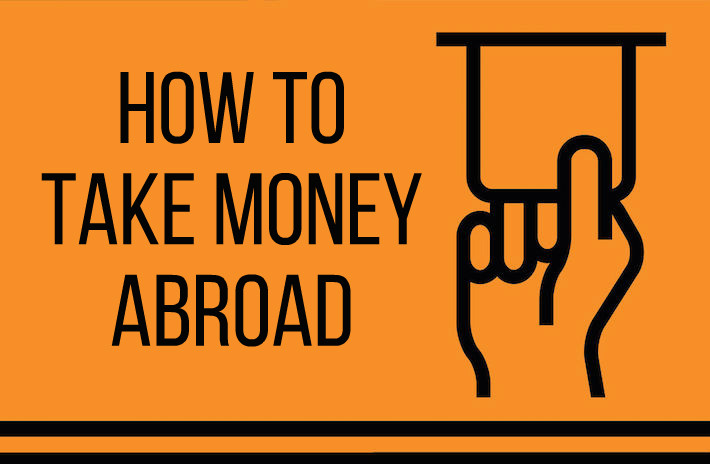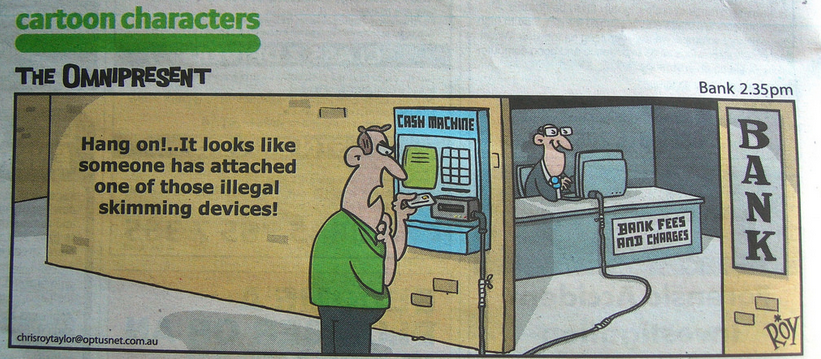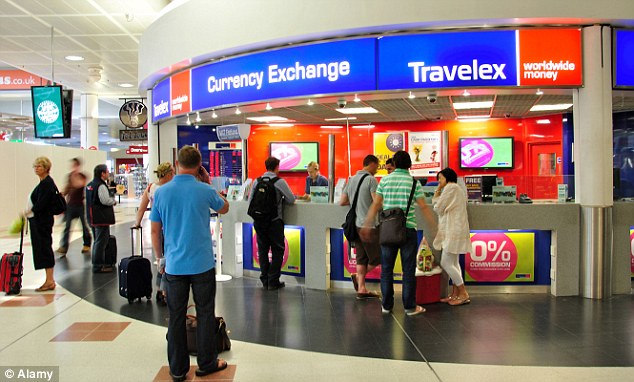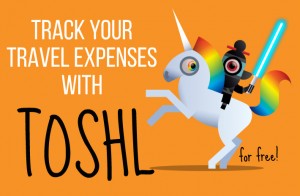There are many things you can do to save money while traveling abroad. How you get local currency to begin with is actually one of the main things to keep in mind!
We’re often asked if we exchange money before we travel to a new place. No, we do not! We work online, earn mostly in USD and do not bother exchanging our money before we arrive to a new country. With the exception of very few places, we always rely on ATMs to get local currency. Over the years, we have found that withdrawing money in a given country tends to be more favorable than exchanging currency before we even get there. But even when it comes to ATM usage, there are different ways to go about it. And, because no one wants to lose hard earned money just because, there’s something we should keep an eye on when using the ATM abroad.
Depending on the bank that owns the ATM you are using to take out money, the machine sometimes pops questions that are NOT silly and might end up making a difference to your pocket.
Let’s look at an example to understand what we mean…
When we were in Turkey, Ashray used his debit card to take local currency. The money in the bank account is in US Dollars while the local currency is the Turkish Lira. This means that there would have to be a currency exchange at some point.
When inserting the card in the ATM in Istanbul, the machine popped this question:
Would you like to use Standard Chartered Bank’s exchange rate of USD 0.3217 = 1 TRY or use the Maestro Exchange Rate that will be calculated later?
Left Button – Maestro Exchange Rate
Right Button – Standard Chartered Exchange Rate
Now, anyone who cares about any amount of money would be confused at this point of time. Should we go for full disclosure with the 0.3217 rate or should we take the unclear route of “unknown exchange rate”. Most people would choose the known option and this is exactly what the bank is aiming for!
On top of this the ATM slyly built some credibility around itself because the first “Notice” it gave when the card was inserted:
Your bank might charge you for transactions at this ATM.
Such a nice ATM! Looks like it should be trusted, right?!
Many people would end up selecting the USD 0.3217 exchange rate because in that case they would at-least know how much money they’re being charged, versus avoiding any surprises later.
WRONG!
Always take the Maestro/VISA/Intl. Agency exchange rate. When a bank asks you this question, it’s usually so that they can make a quick buck on the exchange rate. Besides, Maestro’s exchange rate will always be better simply because they use the rate for that day’s wholesale international currency exchanges across the world and might add a small commission to it, whereas the bank will add another commission over and above this rate. This means that you’ll get the best rate even though your transaction is significantly smaller than what would qualify for a “wholesale” exchange.
This is why we always choose the Maestro (or other VISA/AMEX/etc. debit card we may be using) option. If you use your card abroad and take out money twice, once using the ATM/Bank currency exchange, and another time using your debit card currency exchange, you’ll see the difference in your final bank statement. That difference tends to be somewhere between 2.5% to 5% which means that, selecting the exchange rate offered by the ATM, you’ll end up losing quite a considerable amount of money! If you lose $5 for every $100 you take, it will surely amount to A LOT over your travels abroad!
So what’s the lesson here ?
Well, quite obviously, go with the big guy’s exchange rate. Ditch the middle-man, that is, the bank!
Other than selecting the most favorable currency exchange rate at the ATM, you should also keep in mind that a bank would usually give you a better exchange rate than a currency exchange outlet. You know the ATMs you often see right by the luggage belts upon arrival at the airport? They are there for a reason! They are normally attached to currency exchange counters, to remind you that, now that you are in a new country, you need local currency. And while that is true, in the vast majority of cases, it’s better to skip those ATMs and look for Bank branded machines outside the airport.
Learning how to deal with your money in a smart way is one of the best travel tips we can give you! If you work hard to make money, make sure it goes straight to paying for those experiences you were dreaming of!







WOW! Great travel tip. I didn’t even know what the Maestro Exchange Rate was! Eye opener
Thanks for this article.. it’s really helpful when going abroad…
Essential reading!! Using the ATM abroad can feel like a bit of a lottery in terms of exchange rate and which button to press etc. Sometimes the names of each section of the account are different – what is called “Cheque” in Australia, I have seen referred to as “Cash”, “Checking” and “account” in various places. And yes, always change your money outside of the airport, if you can help it!!!!
Some great tips here! I live in Greece, and access my money from the UK via an ATM. Fortunately, I have a great credit card which has no withdrawal fees and perfect exchange rate. I hope it never changes!
I’d add that make sure that you take more than one ATM card preferably from different banks, as well as making sure that you have notified these banks and your credit card companies that you will be travelling prior to your trip.
If you have just one ATM card and it becomes corrupted or its bank refuses to honour it because of suspicious activity you will enter a financially bad place.
Moreover, don’t use ATM cards at merchants or at ATM machines not at banks. A hacker (e.g., card reader) could drain your entire bank account and it’s harder to prove that you did not do this yourself than when you use credit cards.
Great points! Yes, it’s definitely advisable to carry a few different cards when traveling internationally. You never know which ones won’t work. When we were in Cuba, Mastercards did not work over there because it’s US owned. Now that sanctions have been lifted they do work in Cuba but back in 2012, it wasn’t possible to use them anywhere in Cuba.
Thanks, Ashray! This loyal reader loves your blog.
I lived abroad for a little while, and there are some things in this article that I wish we had known before I left. Most people may not think about how these exchange rates will affect them, but as you explained so clearly, they will make a big difference. I would go further to add that you should look into getting a different kind of debit or ATM card to avoid the withdrawal fees that can add up quickly.
How do Indian Debit Cards work abroad ? Are they better than Credit Cards or do reccommend carrying a credit card too ?
They work just fine. You could use a credit card but it’d be mostly the same.
Hi Ashray, I would really really appreciate you so much if you can write an article about avoiding/escaping return ticket hassle, especially with an Indian passport.
When I was heading for a trip to 4 countries, i’ve been stopped by the airlines people in India and by the Indian immigration officer. You know why? They told me to show the return ticket proof!! They literally asked me to book forwarding tickets for all the 4 countries and a return ticket from final destination. WTF!!
Because of those idiots I had to cancel my trip and settled with 2 countries :(
Great travel tips and information that save you money, in a fun to read perspective!
Super helpful! I am in South America now and are finding out that some of the ATMs won’t allow us to complete transactions and others will. A local told us that some banks machines just work better.
HI, Thanks a lot for so this kind of information. Great.
Hi, Thanx a lot for sharing this kind of information. Its really great.